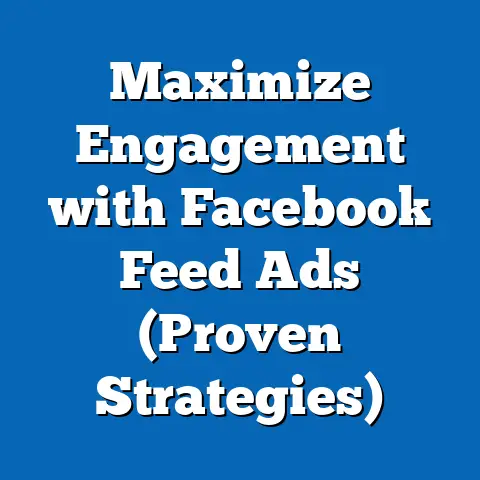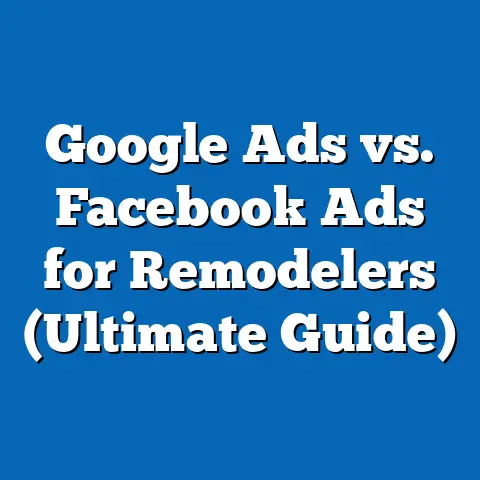Understanding VAT in Facebook Ads (Essential Guide)
Understanding VAT in Facebook Ads: Essential Guide
In today’s digital age, Facebook Ads have become an indispensable tool for businesses aiming to expand their reach and connect with potential customers. With more and more companies allocating significant portions of their marketing budgets to online advertising, it’s crucial to understand the financial implications that come along with it. One such implication is Value Added Tax (VAT). For businesses that want to maximize their return on investment (ROI), understanding VAT is not just about compliance; it’s about optimizing ad spend and ensuring financial management. By getting to grips with VAT, businesses can avoid costly errors, optimize their advertising strategies, and ultimately achieve better financial outcomes. This guide will walk you through everything you need to know about VAT and how it applies to your Facebook Ads, turning a potentially confusing topic into a clear path to compliance and efficiency.
Section 1: What is VAT?
Let’s start with the basics.
Defining Value Added Tax (VAT)
Value Added Tax, or VAT, is a consumption tax that’s applied to the value added at each stage of the supply chain, from initial production to the point of sale to the end consumer. It’s essentially a tax on the increase in value that a business adds to a product or service. Unlike a sales tax, which is only levied at the final point of sale, VAT is collected at each stage of production and distribution.
In the context of digital advertising, VAT is applied to the cost of advertising services provided by platforms like Facebook. For businesses, this means that when you purchase ads on Facebook, you may be charged VAT on top of the ad spend.
VAT Around the World: A Patchwork of Rates
One of the trickiest aspects of VAT is that it’s not universally applied in the same way. Different countries have different VAT rates, and some countries don’t even have VAT at all! For instance, in the European Union (EU), VAT rates vary from country to country, with some having standard rates above 20%. Other regions, like the United States, rely on a sales tax system that differs significantly from VAT.
Understanding the VAT rate in the countries where you’re running ads is crucial for accurate budgeting and financial planning. I remember working with a client who was launching a campaign across Europe. They hadn’t factored in the varying VAT rates, and their budget was quickly thrown off. We had to re-allocate funds and adjust targeting to stay within their financial constraints.
Input Tax vs. Output Tax: The VAT Balancing Act
VAT works on the principle of input tax and output tax. Input tax is the VAT you pay on goods and services you purchase for your business (like Facebook Ads). Output tax is the VAT you charge on the goods and services you sell.
Here’s how it works in the context of Facebook Ads:
- Input Tax: When you pay for Facebook Ads, the VAT you pay is considered input tax.
- Output Tax: If you’re selling goods or services, the VAT you charge to your customers is output tax.
At the end of your VAT reporting period (usually monthly or quarterly), you calculate the difference between your input tax and output tax. If your input tax (VAT paid) is higher than your output tax (VAT collected), you can claim a refund from the tax authorities. If your output tax is higher, you need to pay the difference to the tax authorities.
Why VAT Matters for Facebook Advertisers
VAT matters for Facebook advertisers because it directly impacts your ad spend. If you’re not aware of the VAT implications, you might underestimate your advertising costs and run into budget issues. More importantly, failing to comply with VAT regulations can lead to fines and penalties.
Key Takeaway: VAT is a consumption tax that applies to Facebook Ads. Understanding VAT rates in different countries and the concepts of input and output tax is crucial for accurate budgeting and compliance.
Section 2: How VAT Applies to Facebook Ads
Now that we’ve covered the basics of VAT, let’s get into the specifics of how it applies to Facebook Ads.
VAT Charges on Facebook Ad Purchases
Facebook, like other digital advertising platforms, is required to charge VAT on ad purchases in certain countries. The VAT rate depends on the country where your business is located.
For example, if your business is based in the UK, Facebook will charge you UK VAT on your ad purchases. If your business is in Germany, you’ll be charged German VAT, and so on. If you’re a business in a country that doesn’t have VAT, you might not be charged VAT at all.
Facebook’s Role as a Supplier of Advertising Services
Facebook acts as a supplier of advertising services. Therefore, the application of VAT depends on the location of your business and the type of advertising services provided. Generally, VAT is applied based on the “place of supply” rule, which means that VAT is charged in the country where the customer (the advertiser) is located.
Here’s a breakdown:
- EU Businesses: If you’re a business in the EU and you have a valid VAT registration number, you can provide this to Facebook. In this case, Facebook won’t charge you VAT, and you’ll be responsible for accounting for VAT under the reverse charge mechanism.
- Non-EU Businesses: If you’re a business outside the EU, VAT may or may not be charged depending on the local regulations.
Cross-Border Advertising and VAT
Cross-border advertising adds another layer of complexity to VAT. If you’re running ads in multiple countries, you need to be aware of the VAT regulations in each of those countries.
For instance, if you’re a UK-based business running ads in France, you might need to register for VAT in France if your advertising activities exceed a certain threshold. This is because you’re effectively providing a service (advertising) to French customers.
Key Takeaway: Facebook charges VAT on ad purchases based on your business location. Understanding the “place of supply” rule and the implications of cross-border advertising is essential for VAT compliance.
Section 3: VAT Registration for Businesses
Knowing when and how to register for VAT is a critical step for any business using Facebook Ads.
When Must a Business Register for VAT?
A business must register for VAT when its taxable turnover exceeds a certain threshold within a specified period (usually 12 months). The VAT threshold varies from country to country.
For example, in the UK, the VAT threshold is currently £85,000. This means that if your taxable turnover exceeds £85,000 in a 12-month period, you must register for VAT. In other countries, the threshold might be higher or lower.
It’s important to note that even if your turnover is below the threshold, you can still voluntarily register for VAT. This might be beneficial if you’re making a lot of VAT-able purchases (like Facebook Ads) and want to reclaim the VAT.
Steps Involved in VAT Registration
The steps involved in VAT registration vary depending on the country, but generally, they include:
- Checking Eligibility: Ensure your business meets the VAT registration requirements in your country.
- Gathering Documentation: Collect all the necessary documents, such as your business registration certificate, bank statements, and proof of address.
- Applying Online: Most countries allow you to register for VAT online through their tax authority’s website.
- Receiving VAT Number: Once your application is approved, you’ll receive a VAT registration number.
Maintaining Accurate Records for VAT Purposes
Maintaining accurate records of your advertising expenses is crucial for VAT purposes. This includes keeping invoices from Facebook, records of your ad spend, and any VAT you’ve paid.
I always advise my clients to use accounting software that can track VAT automatically. This not only saves time but also reduces the risk of errors.
Key Takeaway: Businesses must register for VAT when their taxable turnover exceeds the threshold in their country. Maintaining accurate records of advertising expenses is crucial for VAT compliance.
Section 4: Claiming VAT Back
One of the main benefits of VAT registration is the ability to reclaim VAT on eligible business expenses, including Facebook Ads.
The Process for Claiming Back VAT on Facebook Ads
The process for claiming back VAT on Facebook Ads generally involves the following steps:
- Gathering Invoices: Collect all VAT invoices from Facebook for your ad purchases.
- Calculating Input Tax: Calculate the total amount of VAT you’ve paid on Facebook Ads.
- Completing VAT Return: Fill out your VAT return form, including the amount of input tax you’re claiming back.
- Submitting VAT Return: Submit your VAT return to the tax authorities by the due date.
- Receiving VAT Refund: If your input tax is higher than your output tax, you’ll receive a VAT refund from the tax authorities.
Documenting and Submitting VAT Claims
To support your VAT claims, you need to provide documentation such as VAT invoices from Facebook, bank statements showing payment for the ads, and any other relevant records.
It’s essential to keep these records organized and easily accessible. I recommend storing them electronically in a secure cloud storage solution.
Understanding the Rules for Reclaiming VAT in Different Jurisdictions
The rules for reclaiming VAT can vary significantly from country to country. For example, some countries might have specific rules about the types of expenses that are eligible for VAT refunds. Others might have different deadlines for submitting VAT returns.
If you’re an international business, it’s crucial to understand the VAT rules in each of the countries where you’re running ads. This might involve consulting with a tax advisor who specializes in international VAT.
Key Takeaway: Businesses can claim back VAT on Facebook Ads by gathering invoices, calculating input tax, and submitting VAT returns. Understanding the rules for reclaiming VAT in different jurisdictions is essential for international businesses.
Section 5: Common Mistakes and Misunderstandings
VAT can be a complex topic, and it’s easy to make mistakes or misunderstand the rules. Let’s look at some common pitfalls to avoid.
Frequent Misconceptions About VAT and Facebook Ads
One common misconception is that all Facebook Ads are exempt from VAT. This is not true. VAT is generally applied to Facebook Ads unless you’re a VAT-registered business in the EU and you provide Facebook with your VAT number.
Another misconception is that you don’t need to worry about VAT if your business is small. This is also not true. If your taxable turnover exceeds the VAT threshold in your country, you must register for VAT, regardless of the size of your business.
Consequences of Failing to Comply with VAT Regulations
Failing to comply with VAT regulations can have serious consequences, including:
- Fines and Penalties: Tax authorities can impose fines and penalties for failing to register for VAT, failing to submit VAT returns on time, or failing to pay VAT due.
- Interest Charges: You might be charged interest on any unpaid VAT.
- Legal Action: In severe cases, tax authorities can take legal action against you.
Real-World Examples of VAT Challenges
I’ve seen businesses face significant challenges due to VAT misunderstandings. One client, a small e-commerce company, didn’t realize they needed to register for VAT until they received a letter from the tax authorities demanding payment of unpaid VAT, plus penalties and interest. They ended up having to pay a substantial amount of money, which put a strain on their finances.
Another client, an international marketing agency, failed to understand the VAT rules in different countries where they were running ads. They ended up overpaying VAT in some countries and underpaying in others, leading to a complex and time-consuming audit.
Key Takeaway: Common misconceptions about VAT and Facebook Ads can lead to serious consequences. Understanding the rules and avoiding these mistakes is crucial for VAT compliance.
Conclusion
In conclusion, understanding VAT is essential for businesses using Facebook Ads. By taking the time to educate themselves on VAT, businesses can avoid costly mistakes, optimize their advertising strategies, and ensure compliance with tax regulations.
I’ve seen firsthand how a little bit of knowledge can go a long way. Businesses that take the time to understand VAT can not only avoid costly mistakes but also leverage tax regulations to optimize their advertising strategies.
So, what are the next steps?
- Review Your VAT Status: Check whether your business is required to register for VAT in your country.
- Maintain Accurate Records: Keep accurate records of your advertising expenses and VAT payments.
- Submit VAT Returns on Time: Ensure you submit your VAT returns by the due date.
- Seek Professional Advice: If you’re unsure about any aspect of VAT, consult with a tax advisor who specializes in digital advertising.
By taking these steps, you can ensure that you’re fully capitalizing on your advertising efforts and avoiding any unnecessary financial risks. Happy advertising!






